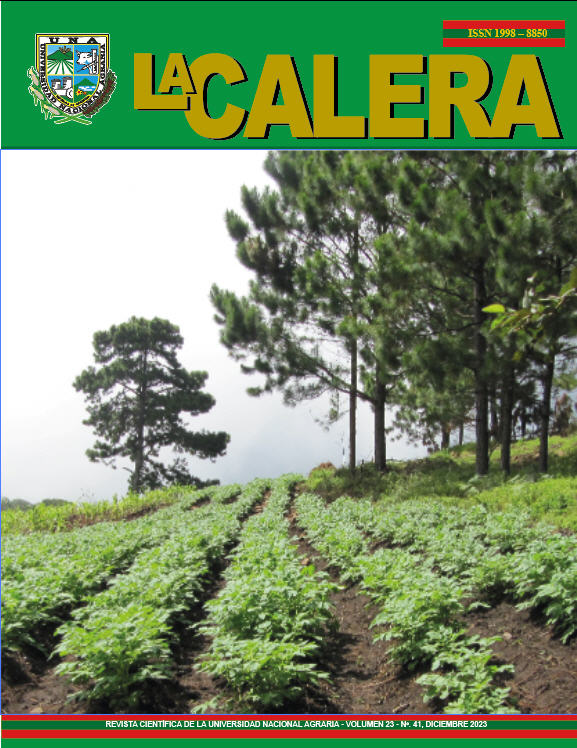Modeling and statistical analysis of lahars 2005 -2016 for an early warning system in the Concepción volcano, Ometepe island, Rivas
DOI:
https://doi.org/10.5377/calera.v23i41.17344Keywords:
Lahar phenomena, precipitation thresholds, accumulated rainfall, precipitation intensity, alertAbstract
Lahars are flows composed of sediments and water originating from the external part of volcanoes; they are highly destructive due to the high speed they take and their high density. This research suggests precipitation thresholds to be integrated into an Early Warning System on the Concepción volcano, on the island of Ometepe, Rivas, Nicaragua, in the event of lahar phenomena. Initially, an inventory of lahars that occurred between the period from 2005 to 2016 was carried out. From this database, a selection of events was made and a statistical analysis of precipitation recorded on the day of each lahar event or precipitation triggering the lahar was carried out (according to availability of information) and the previous accumulated rainfall in a period of 30 days. Subsequently, with the LanslideSim2016® program, lahar modeling was carried out for different precipitation intensities. To reduce the uncertainty of the program, standard penetration tests and cohesion measurements were carried out in the field; the internal friction angle was estimated from the results of the standard penetration tests, the conductivity and apparent density were obtained from the correlation with the different textural classes as observed in the field. Finally, considering what was established by Law No. 337 “Law Creating the National System for the Prevention, Mitigation and Attention to Disasters” with its reform Law No. 863, precipitation thresholds were estimated for the activation of an Early Warning System. Based on the results obtained, five intervals of precipitation thresholds are proposed for integration into an Early Warning System under the risk of occurrence of lahars between 15 mm and 25 mm, from 25 mm to 50 mm, between 50 mm and 80 mm, from 80 mm to 100 mm and greater than 100 mm; the type of alert to be issued is green, yellow or red and will be linked to the previous accumulated rain of one day, three days or ten days.
Downloads
234
EPUB (Español (España)) 97
PDF (Español (España)) 79
Published
How to Cite
Issue
Section
License
Copyright (c) 2023 Universidad Nacional Agraria

This work is licensed under a Creative Commons Attribution-NonCommercial-ShareAlike 4.0 International License.

